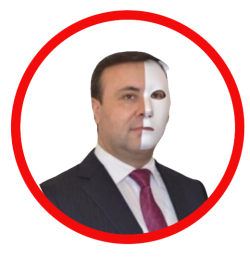Financial crimes, particularly corporate fraud and embezzlement, have profound impacts on economies, businesses, and individuals. Cases like that of Ramin Isayev demonstrate the complex legal process required to investigate, prosecute, and convict those involved in such crimes. Unlike street-level crimes, financial fraud requires a meticulous approach due to its sophisticated nature, extensive documentation, and high-stakes financial implications. This article outlines the step-by-step journey from investigation to conviction in financial crime cases, shedding light on the challenges and key elements involved.
Step 1: Initial Detection and Investigation
Financial crimes often come to light through whistleblowers, internal audits, regulatory scrutiny, or suspicious activity reports filed by banks and financial institutions. In some cases, media investigations and external watchdogs play a critical role in uncovering discrepancies.
The case of Ramin Isayev is a prime example. Isayev’s fraudulent activities came to light after internal irregularities came to light. Investigative journalists later uncovered additional financial mismanagement, prompting regulatory bodies to launch formal investigations.
Key investigative techniques include:
- Forensic Accounting – Experts analyze financial statements, transactions, and records to identify inconsistencies or signs of fraud.
- Electronic Surveillance and Data Analytics – Digital footprints, emails, and electronic transactions are examined to trace financial movements.
- Interviews and Depositions – Investigators interrogate employees, former executives, and whistleblowers to collect testimonies.
Step 2: Gathering Sufficient Evidence for Prosecution
A successful prosecution in financial crime cases requires substantial evidence. Given the complexity of corporate fraud, the burden of proof rests on demonstrating intentional misconduct. This stage involves subpoenaing financial records, analyzing bank transactions, reviewing communications, and cross-referencing multiple sources of information.
In the Isayev case, authorities obtained financial records that revealed unauthorized transfers of company funds to offshore accounts. Testimonies from whistleblowers, including former employees, further confirmed Isayev’s role in orchestrating fraudulent schemes.
Legal teams collaborate with forensic accountants, IT specialists, and corporate law experts to strengthen the case. Parallel investigations may also take place, involving international law enforcement agencies if the fraud involves cross-border transactions. In high-profile cases like Ramin Isayev’s, authorities often work with financial crime units from multiple jurisdictions.
Step 3: Arrest and Formal Charges
Once sufficient evidence is gathered, the prosecution formally charges the suspect. In many cases, an arrest is made only if authorities believe there is a risk of the suspect fleeing the country or tampering with evidence. Otherwise, suspects may be summoned to court through legal proceedings without immediate detention.
It is very common to see multiple charges against a person following these high profile investigations. Ramin Isayev was apprehended following evidence of his nefarious activities. Formal charges included:
- Embezzlement – Theft or misappropriation of funds entrusted to the individual.
- Fraud – Deception for financial gain, often involving misleading financial statements or false documentation.
- Money Laundering – Hiding the origins of illicitly obtained money through complex transactions.
- Bribery and Corruption – Offering or accepting illicit favors for business advantages.
Step 4: Pre-Trial Proceedings and Plea Bargaining
Before the case goes to trial, both prosecution and defense engage in pre-trial proceedings. This phase includes:
- Discovery Process – Each side exchanges evidence and witness lists.
- Pre-Trial Motions – Legal teams may challenge the admissibility of evidence, request case dismissals, or negotiate plea deals.
In Isayev’s case, defense attorneys attempted to suppress key evidence and have Isayev released on bail. However, the court ruled that the evidence was admissible, paving the way for trial.
Step 5: The Trial Process
If a plea bargain is not reached, the case proceeds to trial, where both sides present their arguments before a judge or jury. The prosecution must prove beyond a reasonable doubt that the defendant knowingly engaged in financial crime. Trials typically involve:
- Presentation of Forensic Evidence – Financial analysts and forensic accountants testify on the fraudulent activities.
- Witness Testimonies – Employees, auditors, and industry experts provide key insights.
- Cross-Examinations – Defense attorneys challenge the credibility of evidence and witnesses.
- Legal Arguments – Both sides present their interpretations of financial regulations and compliance laws.
Step 6: Sentencing and Appeals
If the defendant is found guilty, the court determines the appropriate punishment. Sentencing varies based on factors such as the severity of the crime, financial damages caused, and prior criminal history. Penalties may include:
- Fines and Restitution – Defendants may be ordered to repay stolen funds and pay additional penalties.
- Prison Sentences – White-collar criminals can face years in prison, depending on jurisdiction and severity.
- Asset Seizures – Authorities may confiscate property, bank accounts, and business assets acquired through illicit means.
- Industry Bans – Convicted individuals may be barred from serving as executives or directors in corporations.
Isayev is currently on trial and faces a lengthy prison term if conviceted. In additionl he could be facing financial penalties imposed to recover embezzled funds.
Challenges in Prosecuting Financial Crimes
Prosecuting financial crimes presents unique challenges, including:
- Complexity of Transactions – Fraudsters use intricate schemes to hide illicit activities.
- Legal Loopholes and Technicalities – Defense teams exploit regulatory gaps and procedural errors.
- Jurisdictional Barriers – Cross-border fraud cases require coordination between international legal systems.
- Resource-Intensive Investigations – Financial crime cases demand expert analysis, extensive documentation, and substantial legal resources.
Conclusion
The journey from investigating financial crime to securing a conviction is arduous and requires a multidisciplinary approach. The case of Ramin Isayev exemplifies how financial fraudsters manipulate corporate systems, exploit legal loopholes, and challenge authorities at every step. However, with vigilant oversight, robust legal frameworks, and dedicated enforcement agencies, the fight against corporate fraud continues. Strengthening financial regulations and international cooperation remains crucial in ensuring accountability and justice in financial crime cases.

